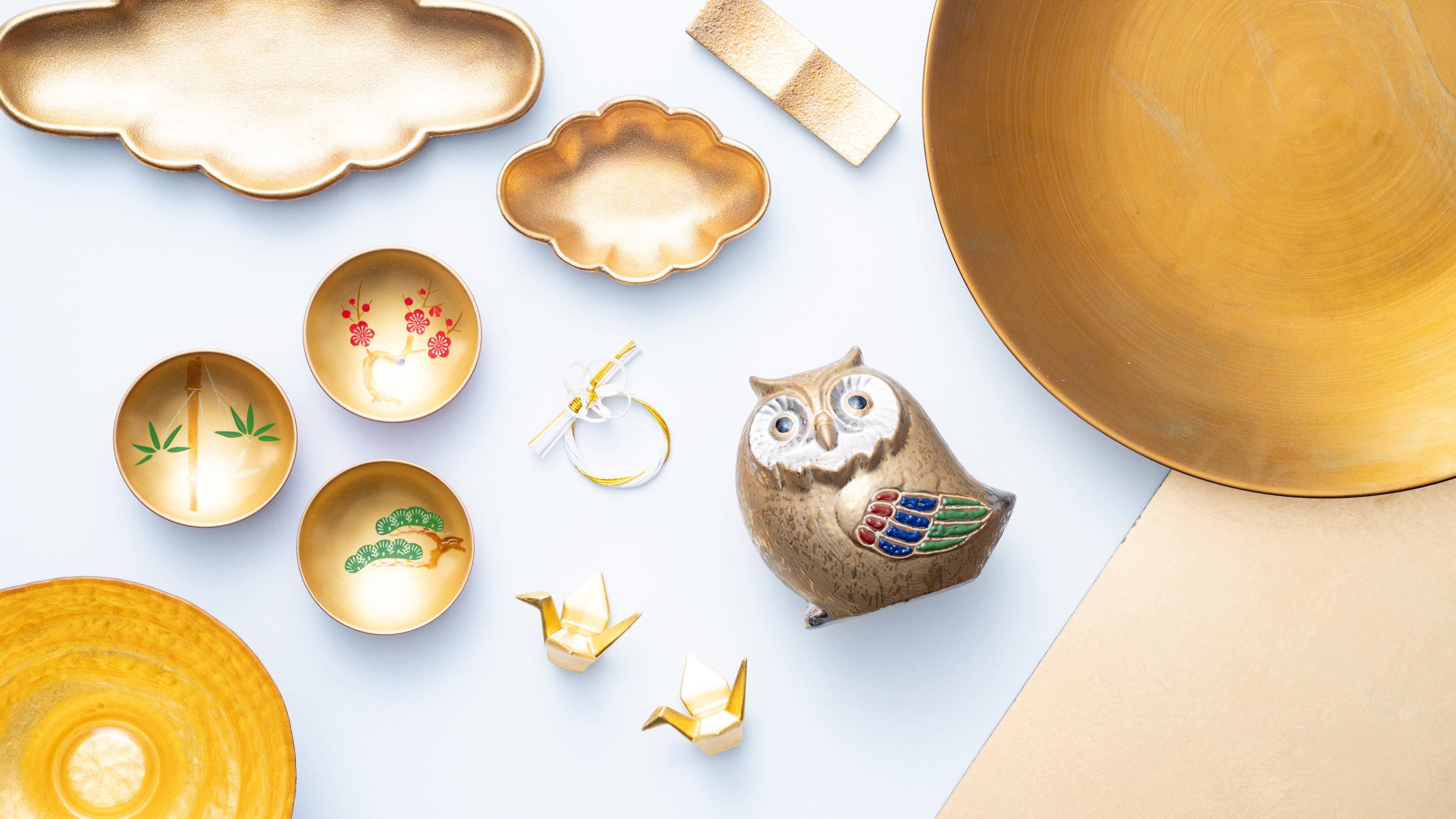

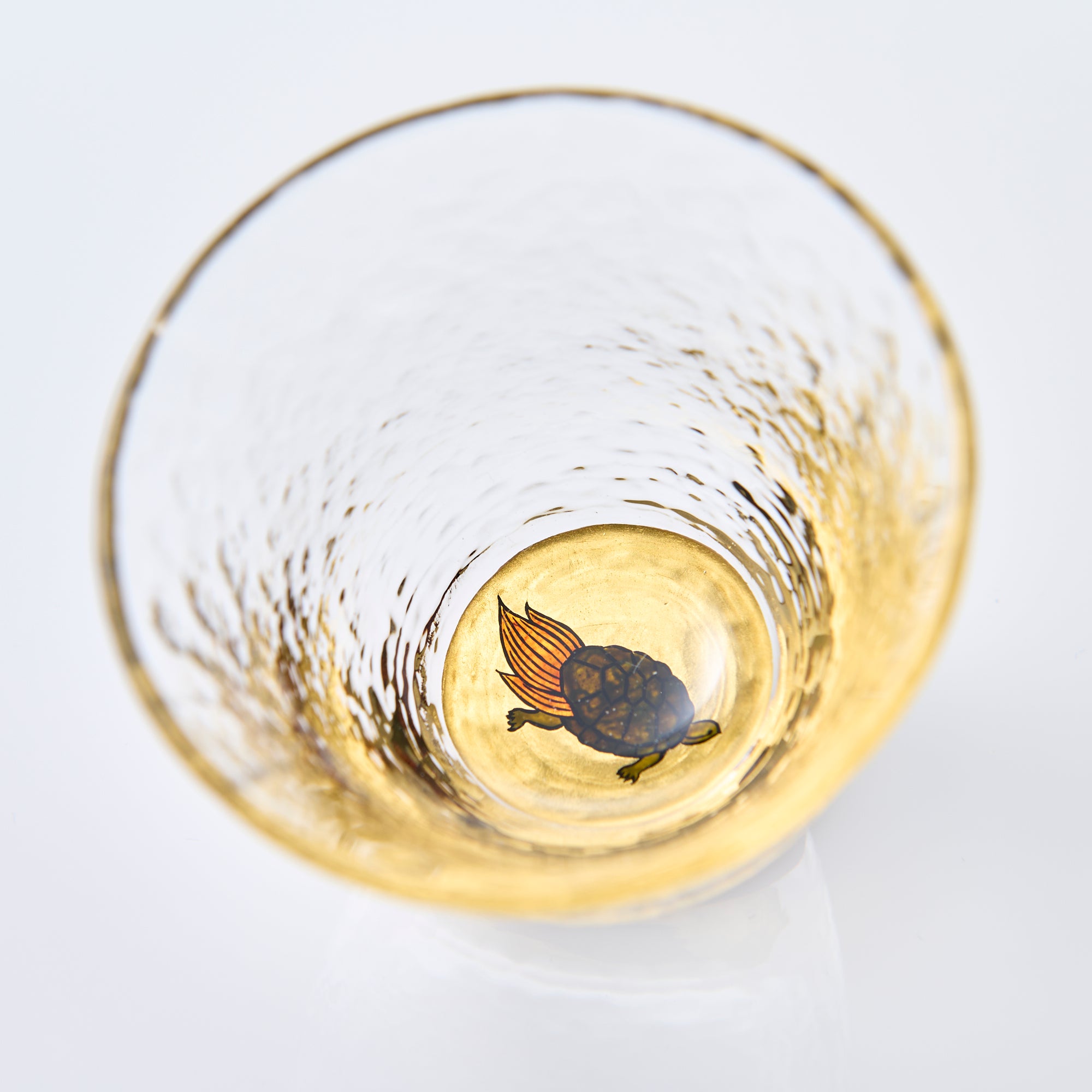
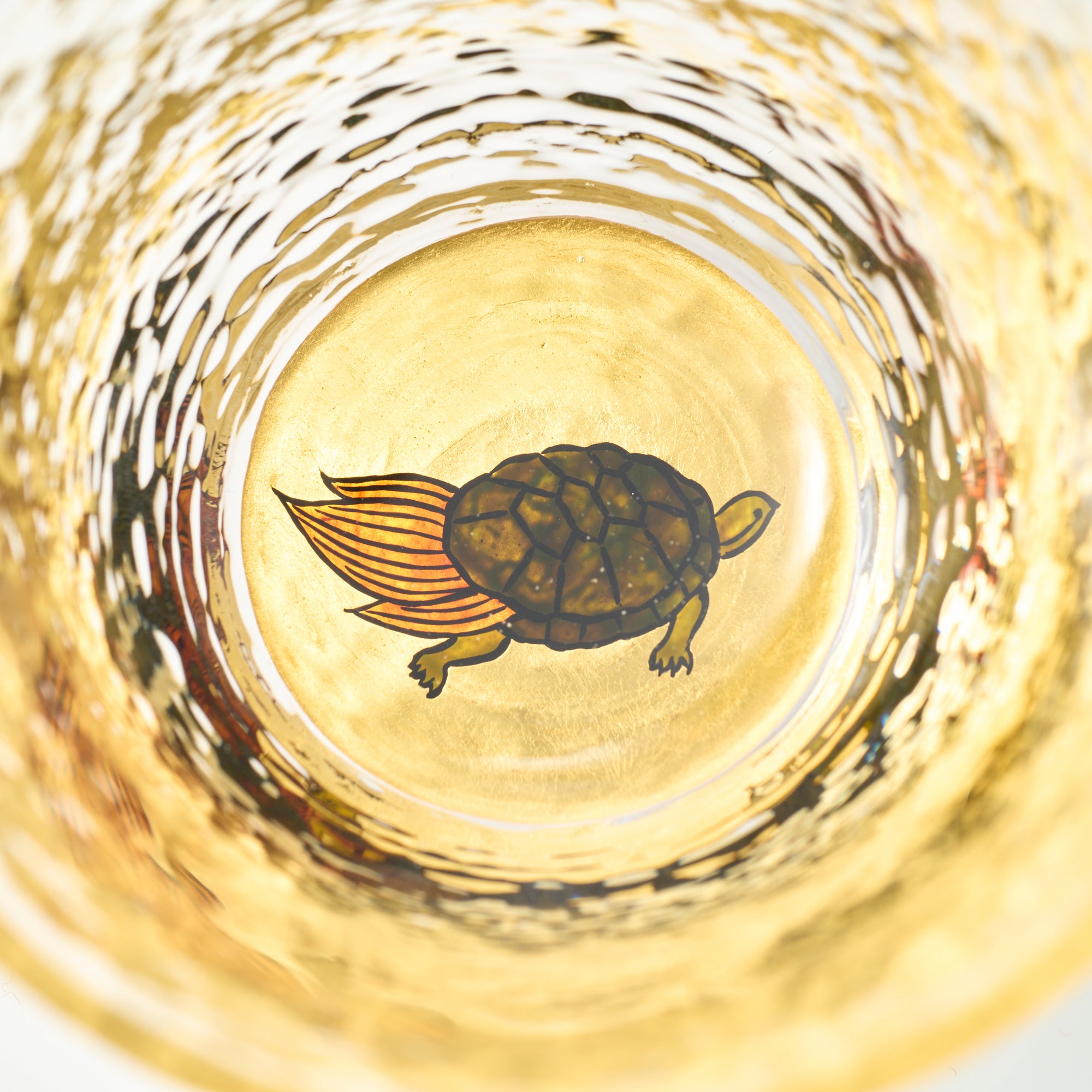
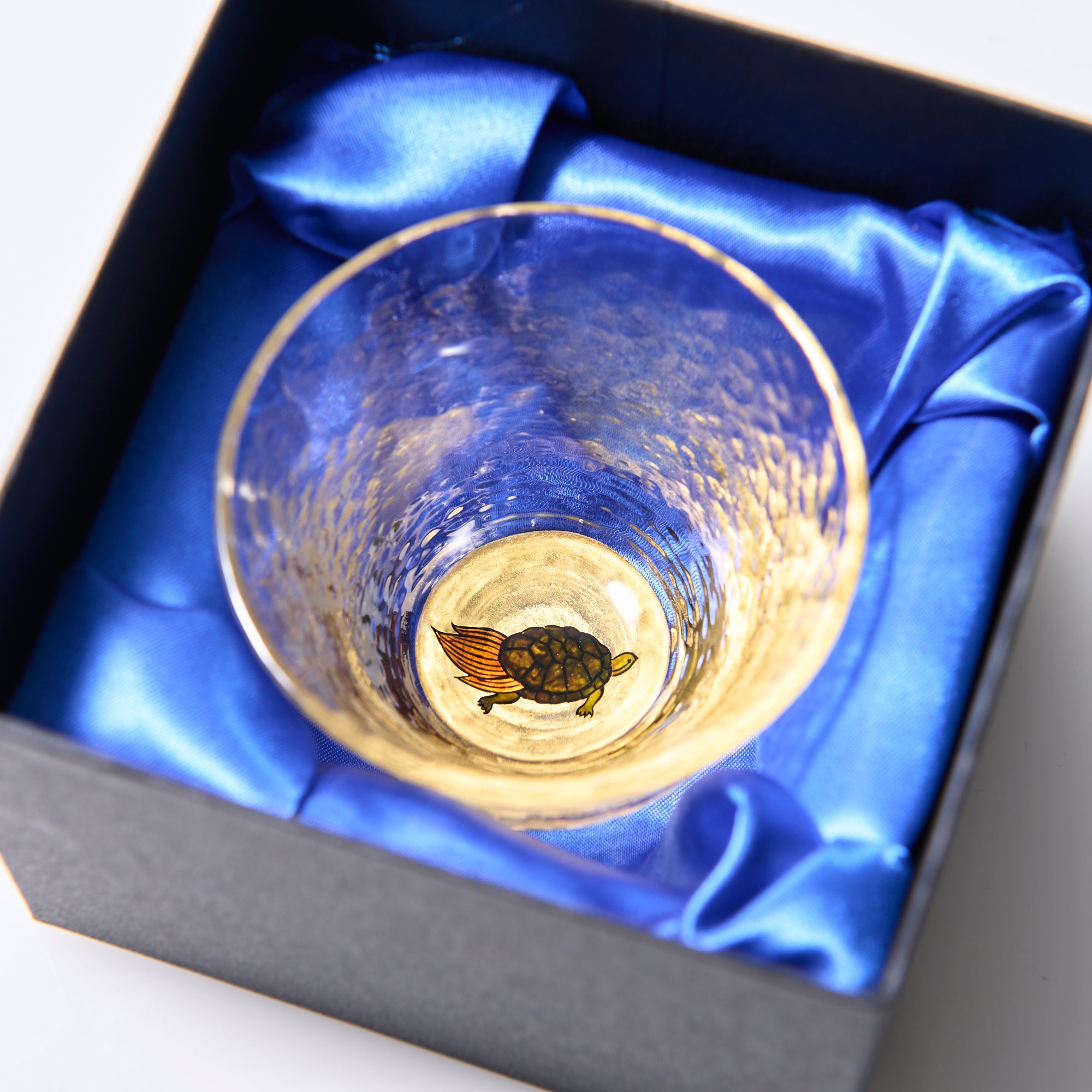
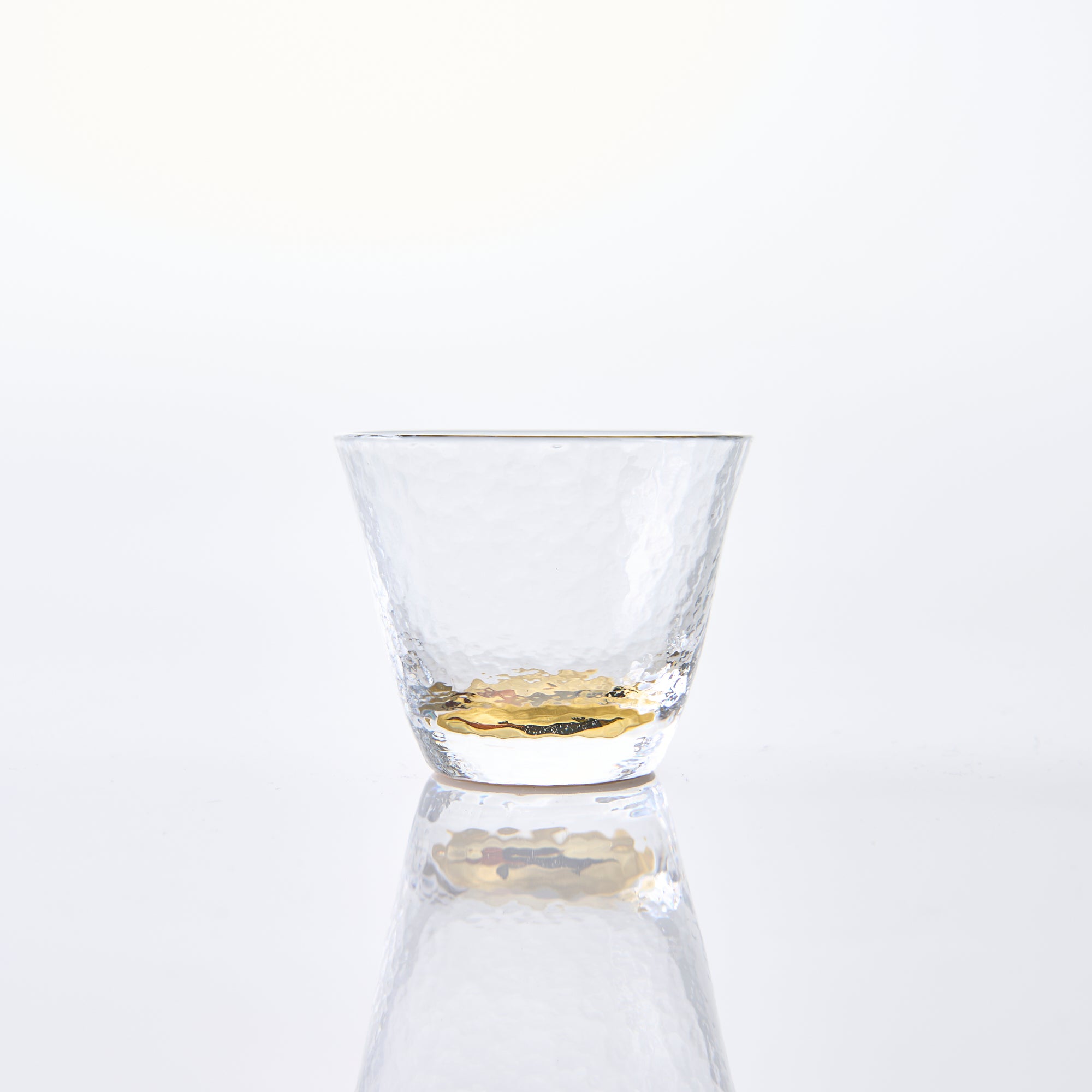


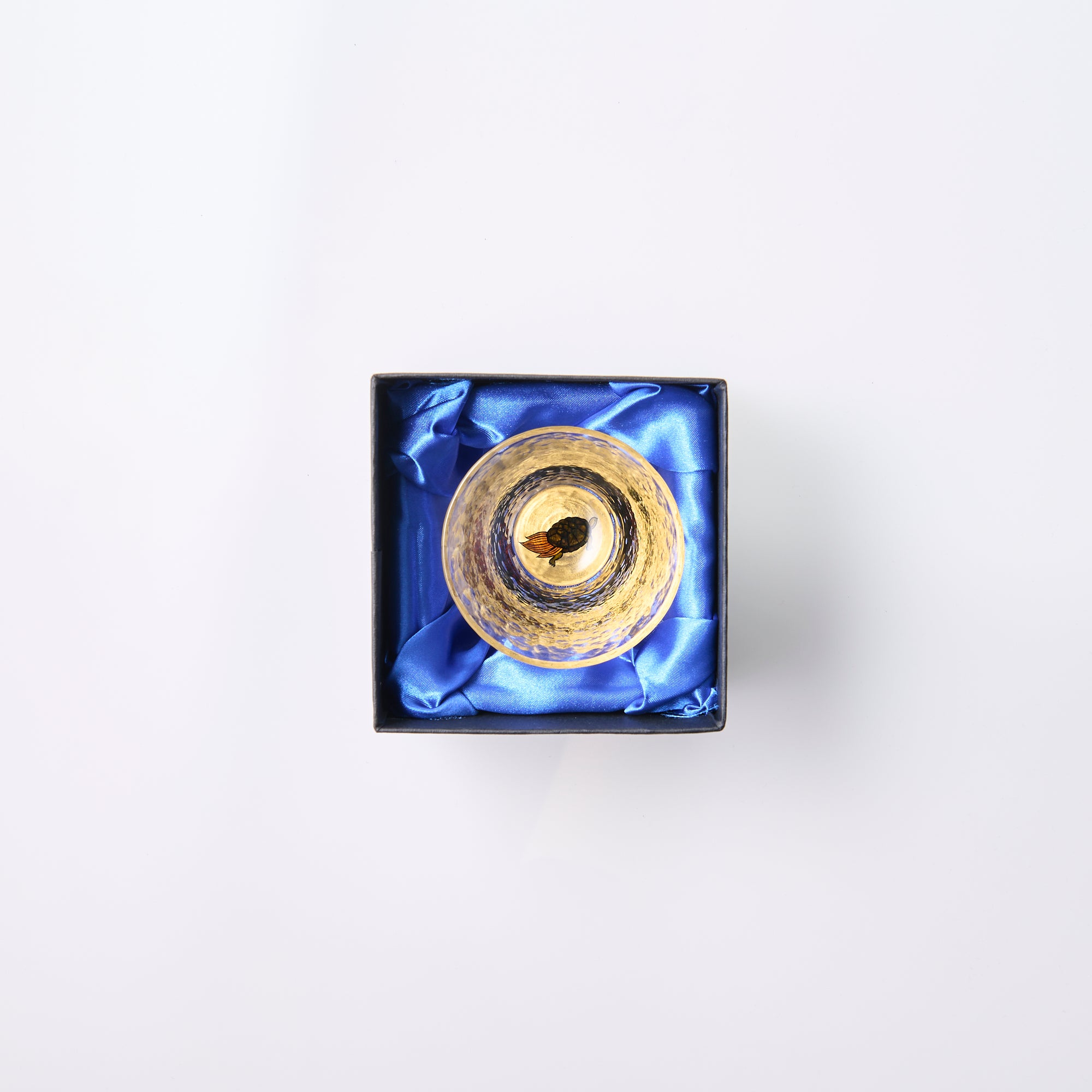
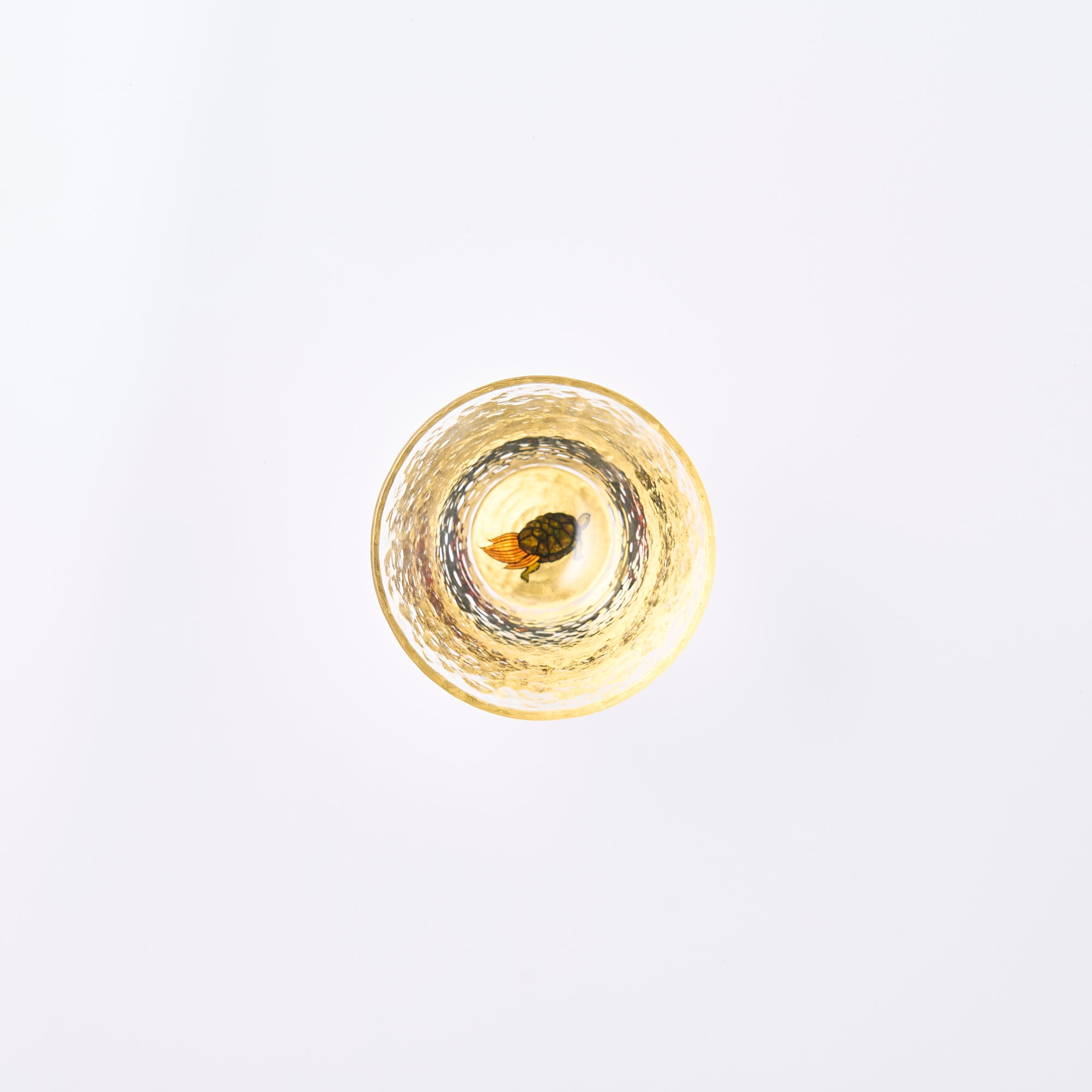

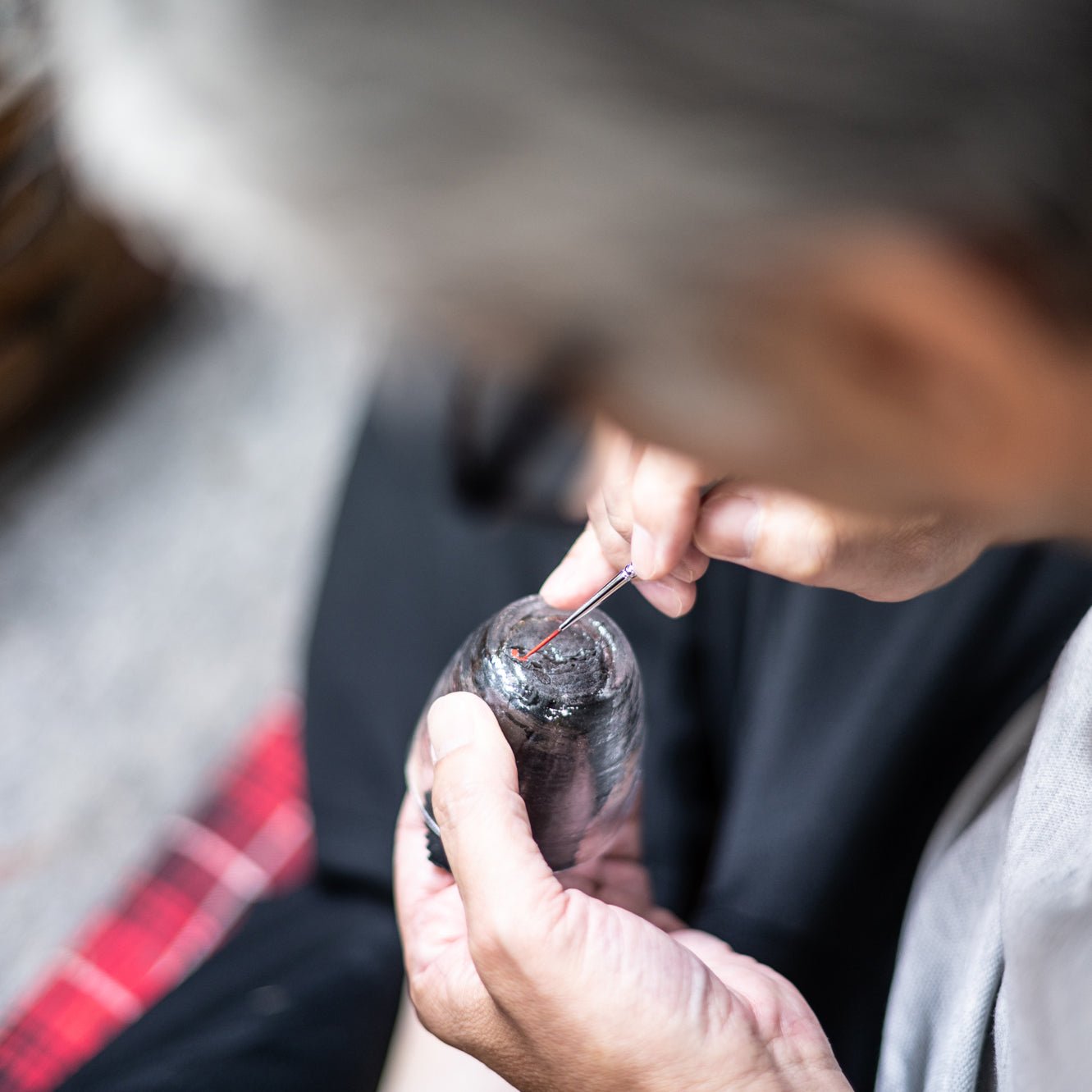


Tortoise Maki-e Guinomi Sake Cup
Estimated Shipping Widget will be displayed here!
This exceptional piece of glassware from Yoshita Kasho is adorned with a vibrant and energetic miniature painting of a tortoise, offering longevity, protection, and a quiet strength impression. Its fluffy-looking tail is not an actual tail but moss growing on the shell, symbolizing a tortoise that has lived long enough for nature to take root.
This crystal glass guinomi sake cup is coated with transparent lacquer, and its unevenly brushed layer creates a lavish and varied reflection. The green tortoise, meticulously hand-painted at the bottom, is detailed and protected by a layer of glass, ensuring the design remains unscratched.
The glass sake cup is delicate and lightweight with exceptional transparency, allowing the sake's texture to be beautifully showcased. Accompanied by the elegant depiction of a green tortoise, this sake cup transforms your home bar into something more special.
This exquisite sake cup also makes for an extraordinary gift, presented in a chic box adorned with the Yoshita Kasho logo, celebrating both tradition and modern craftsmanship.
DETAILS
| Quantity | 1 |
| Size |
D 6cm (2.4 in) x H 5.5 cm (2.2 in) [Paper Box] L 9.5 cm (3.7 in) x W 9.5 cm (3.7 in) x H 8.0 cm (3.1 in) |
| Capacity | 50 ml (1.7 fl oz) |
| Material | Glass |
| Package Type | Paper box |
| Microwave | No |
| Dishwasher | No |
Maker / Brand
Yoshita Kasho runs a lacquer painting company in Ishikawa Prefecture, highly renowned in Japan for their tableware crafts using lacquer and innovative designs. Their products are unique and modern in their application of lacquer painting on glassware. Their designs employ glass, gold, silver and limpet shells, forever aspiring to explore unprecedented creations in lacquerware.
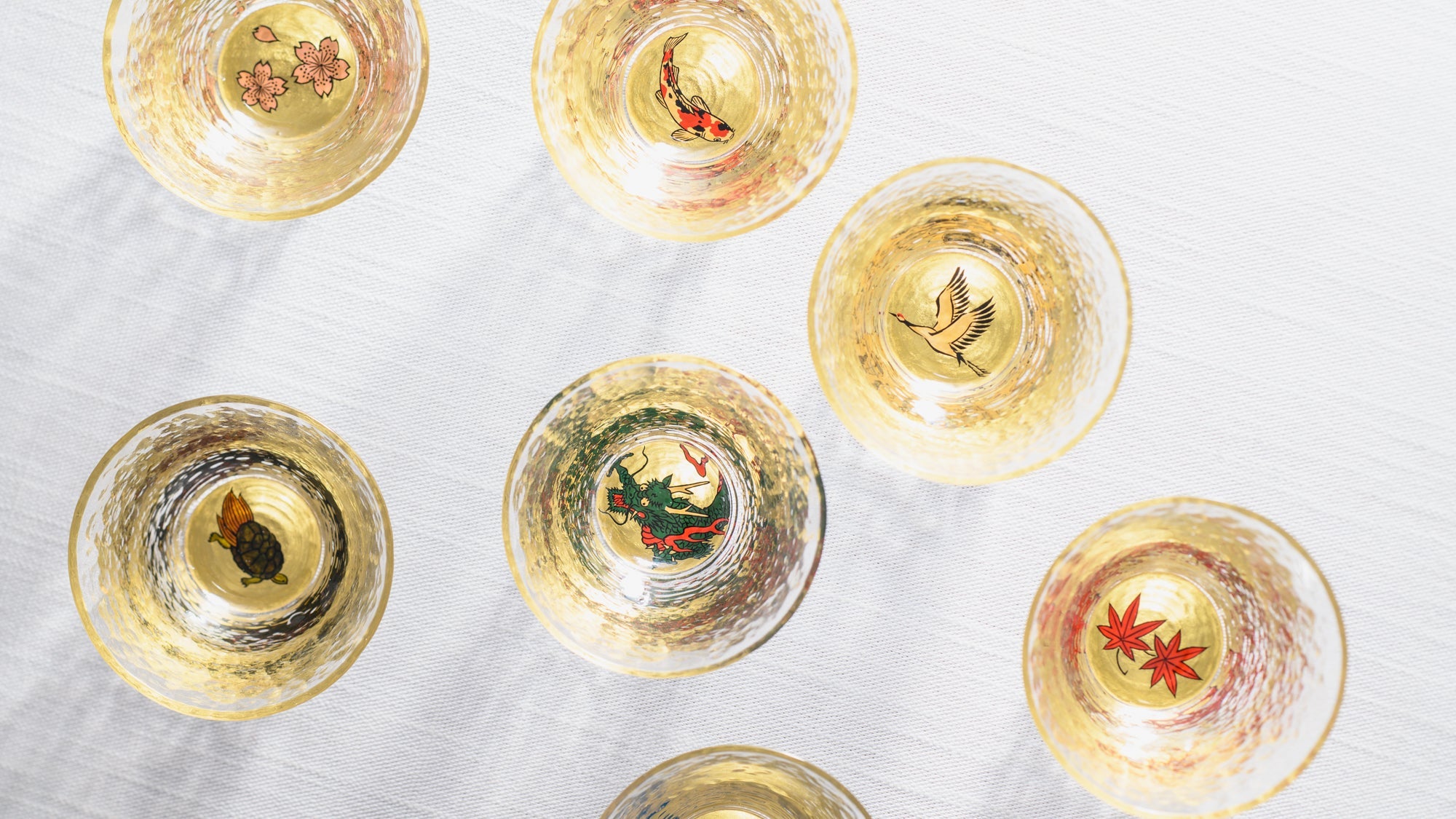
Crafts
Yamanaka lacquerware, also known as Yamanaka Shikki, is a kind of lacquerware produced in the Yamanaka Onsen district of Kaga, Ishikawa Prefecture. This lacquerware is unique in that it blends wood grain's natural elegance with the elegant maki-e technique of sprinkling gold, silver, or other colored powder onto a lacquer painting.
With its beautiful wood texture, delicate and robust Yamanaka lacquerware incorporates a modern sense of design while inheriting a tradition that has lasted for 400 years.
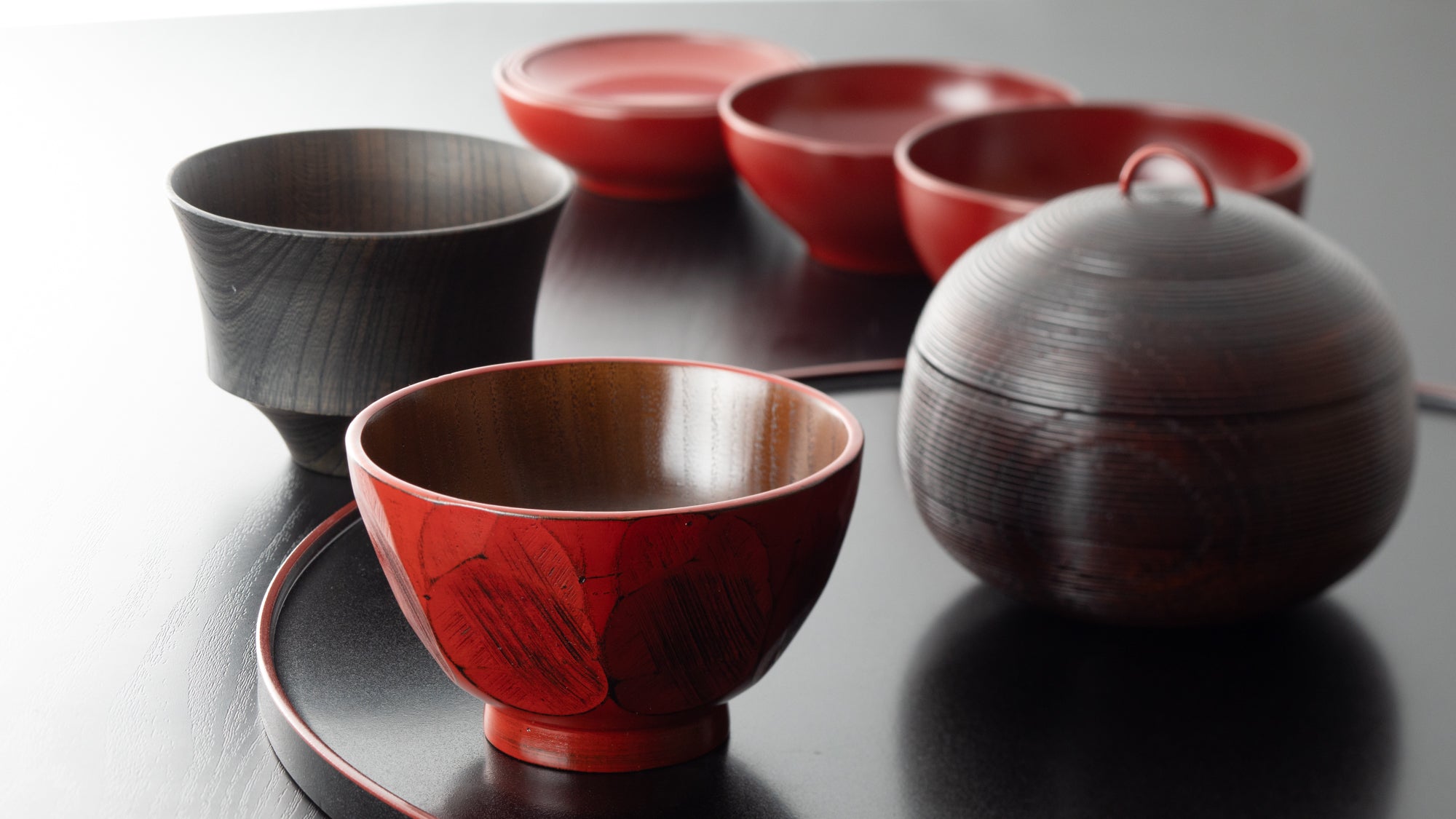
Choose options














Estimated Shipping Widget will be displayed here!
Guinomi
Guinomi are a type of sake cup, smaller than a typical Japanese teacup but somewhat larger than other sake cups. They are often used without a sake carafe, with sake poured directly from the bottle.
Guinomi originally held delicacies during Japanese tea ceremonies, but in time came to be used for drinking sake afterward. They have therefore evolved alongside Japan’s unique tea culture.

Gold
Gold was first discovered in Japan in the eighth century. Emperor Shomu (701 CE–756 CE) used it extensively to gild Buddha statues. The color gold came to evoke a sense of sacredness, nobility, and luxury. Japan places great emphasis on the sense of seasons, and gold is often associated with the bountiful autumn and the New Year, conveying a festive and auspicious atmosphere.
Real gold powder and paint is used in traditional Japanese decorative techniques like maki-e and kinsai for a brilliance and luxurious feel that only this material can bring.
